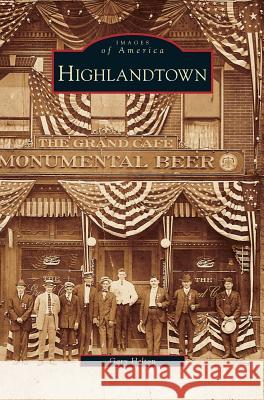Highlandtown » książka
Highlandtown
ISBN-13: 9781531626389 / Angielski / Twarda / 2006 / 130 str.
Highlandtown's strong roots are nourished by old world traditions of family, culture, and faith. Settlement of the area first known as Snake Hill dates to the 19th century's expansion of the waterfront communities of Fell's Point and Canton. Farms and slaughterhouses soon emerged, relying heavily on immigrant laborers from Germany, Italy, Poland, Russia, and Ireland. Fort Marshall was established atop the area's highest point, the present site of Sacred Heart of Jesus Church. A military hospital emerged in Patterson Park, which began as a six-acre gift to the city from merchant William Patterson in 1826. After being renamed Highland Town" in 1862, Baltimore City annexed the town from Baltimore County and changed its spelling. By 1915, much of the retail district had been built along Eastern Avenue among row houses. Streetcars traveled down roadways of dirt or cobblestone, passing theaters, bowling alleys, horse-drawn wagons, and first-generation American children at play. Bakeries, barbers, grocers, and bars were on every corner, along with churches that worshipped in European tongues. There was no need to ever leave Highlandtown, and some folks never did."
Highlandtowns strong roots are nourished by old world traditions of family, culture, and faith. Settlement of the area first known as Snake Hill dates to the 19th centurys expansion of the waterfront communities of Fells Point and Canton. Farms and slaughterhouses soon emerged, relying heavily on immigrant laborers from Germany, Italy, Poland, Russia, and Ireland. Fort Marshall was established atop the areas highest point, the present site of Sacred Heart of Jesus Church. A military hospital emerged in Patterson Park, which began as a six-acre gift to the city from merchant William Patterson in 1826. After being renamed Highland Town" in 1862, Baltimore City annexed the town from Baltimore County and changed its spelling. By 1915, much of the retail district had been built along Eastern Avenue among row houses. Streetcars traveled down roadways of dirt or cobblestone, passing theaters, bowling alleys, horse-drawn wagons, and first-generation American children at play. Bakeries, barbers, grocers, and bars were on every corner, along with churches that worshipped in European tongues. There was no need to ever leave Highlandtown, and some folks never did."











